Parallel Lines: Anna Soens
Powder aims to feature only the best products and services. If you buy something via one of our links, we may earn a commission.
Check out the rest of the Parallel Lines series here.
Athlete: Anna Soens (she/her)
Primary 23/24 terrain: Bachelor Mountain
Sport: Sit-skiing
Anna Soens was a climber, not a skier, before an injury in 2015 left her an incomplete paraplegic. “I grew up in Wisconsin, so I think I went skiing like once a year, if that. And in Wisconsin that’s literally landfills covered in snow, so…” Anna trails off, laughing.
During her recovery from the fall that broke her back, however, Anna re-kindled her relationship with the sport. “Skiing is one of the few adaptive sports that has the potential to put athletes on a level playing field, with the lift component taking out the anti-gravity aspect,” she explains.
“I bike and climb and everything but I’m definitely slower than my able-bodied counterparts. With skiing, I can rip the same speed on the same terrain as anyone else.”
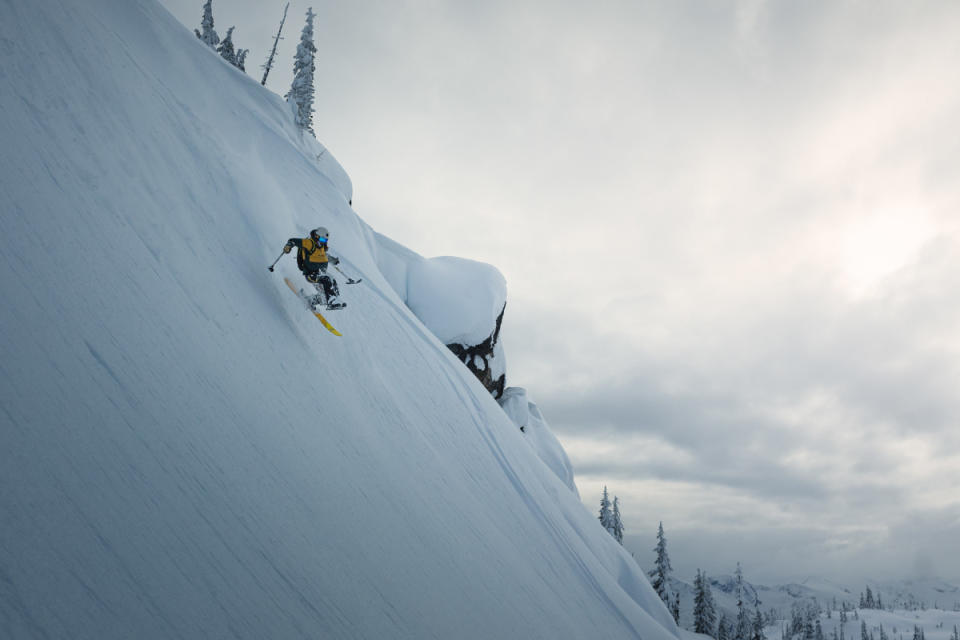
Photo: Robin O'Neill
Anna says adaptive skiing, particularly meeting the community surrounding the sport, helped her in more ways than one: “When I was injured, the physical loss components were kinda secondary in my mind to the loss of freedom, of being able to just grab a pair of shoes and hit a trail somewhere, of the things I did and the places I went that were my identity,” she recalls.
“I was really lucky,” she says of living in Oregon and having access to numerous resources for spinal cord patients. “I got connected pretty early with other young active paras soon after recovery. That was critical.”
Anna says with their help, the previously foreign world of adaptive sports became more approachable. “To have those examples of ‘Hey, being paralyzed doesn’t mean you just have to sit in a wheelchair on pavement for the rest of your life - there’s a lot of other things you can do,’ that was really formative for me.”
Anna’s first day on snow as an adaptive athlete was actually not in a sit-ski. “I was with one of my best friends, Kelly, and it was a stand-up lesson cuz she’s like ‘Hey you switch between crutches and wheelchair let’s try it!’” Anna laughs. “It was terrifying. I was standing up and like - I don’t have any like hamstring or glute muscles so I was just in the backseat just trying not to rip apart my knees.”
So Anna took her next lesson with Oregon Adaptive Sports (OAS). “They had several different sit-skis and I think I tried two different models.” Anna says being able to try skis out early on is a critical component for any new sit-skier. “For one, they’re expensive, and for another, it’s a totally different skill, even if you were a hard core skier before your injury. It requires some tutelage.”

Anna adds that most organizations that help skiers acquire gear of their own, too, want to see that applicants are invested in the sport. “If they’re gonna give you several thousand dollars for something, they want to make sure it’s something you’re gonna use and something that will last. So finding an adaptive program is kinda critical in getting some time in on the equipment.”
Anna says her relative mobility - she has full core and some leg function - helped her learn quickly. “It’s definitely an advantage because it’s very balance and core intensive,” she explains. “I was linking turns my first lesson.”
But feeling as competent with her equipment has been a different story. “Because it’s not even just sports equipment,” Anna explains, echoing something many other adaptive athletes express with frequency. “It’s a sports gear/engineering feat hybrid, and it has required a lot of trust in other people with the expertise to give me guidance.”
For example, while she eventually got a grant to help purchase a sit ski of her own, Anna explains that the steep price tag has changed how she approached progression: “A sit ski is something that needs to grow with you, because you don’t want to be in over your head initially, but you also don’t want to realize you want something better and able to handle more two years down the road.”
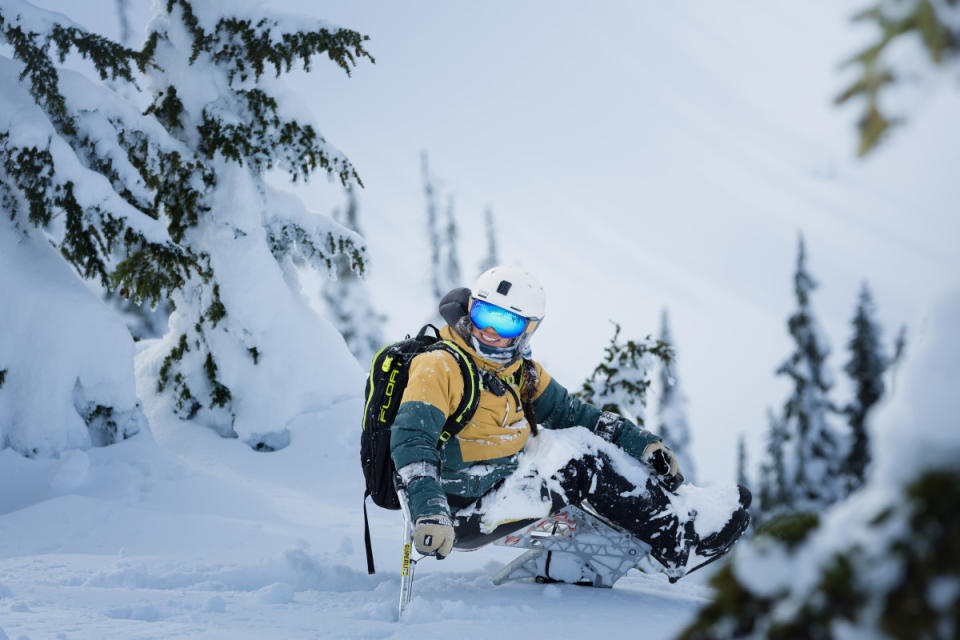
Photo: Robin O'Neill
Similarly, even seemingly small modifications can be hard and/or expensive to pull off. “I don’t like my footplate,” she offers as an example. “Being an incomplete paraplegic, I can kinda move my legs, and I know I put pressure through my feet as I ski. But sometimes my feet move around as I’m skiing, and that can make my feet legs and hips a little bit off-kilter, so I’m not squared as I’m skiing.``
Unlike other skiers who might be able to simply swap boots or get new liners to address play, Anna is faced with a bigger complexity: “It’s not something I can modify myself. I need a welder. It’s a bigger undertaking.”
“I also don’t like how my feet are exposed. If I were to hit a tree or crash really gnarly I’m worried about the impact. So I would love one of those carbon fiber covers over my legs, which would protect me, and also keep me dry and warm,” Anna swoons.
The cost, however, of such a specific and custom piece of equipment, is beyond what Anna says she - like many other paras - can afford. “I’m very lucky that my bucket fits me very well just straight out of the standard sizes,” Anna says as a similar example. “Because a custom ski bucket is like five grand. It all adds up so quickly. It’s ridiculous.”
Outriggers, too, while a bit cheaper, have also challenged Anna, even as she’s grateful to have the set she currently uses. “There’s like one company that makes these things and they’re constantly breaking or freezing or jamming. But they are so not complex,” she laughs, “I just know someone with a brain can create like one other option.”
Anna says she’s also still trying to find the perfect ski for her rig, too. She says that standard, off-the-shelf skis are missing “the burly-ness factor.”
“Sit skiers are notorious for breaking skis because it’s just so much pressure on a single piece,” she explains. “You have to have a layer of metal in it, really, otherwise it just explodes like balsa wood. My go-to or just all-mountain ski has been Nordica Enforcer, but I'm still on my like third or fourth ski. They’re just not designed for that much weight on a single piece of wood.”
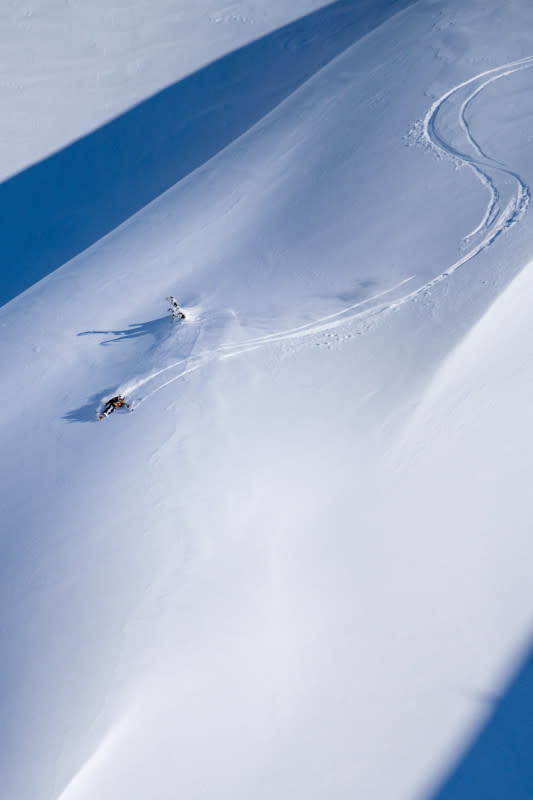
Photo: Robin O'Neill
And while Anna says she recognizes the challenges of researching and developing a specific ski for sit skiers, a relatively small group of folks with a propensity for seeking the cheapest gear available, she also thinks it could be one solution - and that sit-skiers would be more willing to spend money if they knew the gear would last.
“My husband and I bought skis at the same time last season,” she says, for example, “and I was like, ‘Man, even with the pro deal this hurts a little bit because I know I’m not gonna get as many seasons on these as you are. It doesn’t seem fair.’”
Anna wonders if a sit-ski specific ski could also solve another pain point: float, or, more appropriately, lack thereof.
Anna smiles a bit ruefully. With just one ski supporting both rig and rider, she says sinkage is standard for sit-skiers. “Powder skiing is a love-hate relationship,” she laughs. “My widest ski is 114 and I’m sure I could go wider, but short of being on a snowboard or something, I don’t know if the issue will ever be solved for sit-skiers.”
Similarly unsolved for Anna is the question of bindings. “I wish there were a bigger market. Really, there’s only like two or three options for sit skiers,” Anna explains, due in part to the need for incredibly high DIN settings (to keep the weight and torque of a sit ski rig from releasing constantly) and in part to materials.
“We use race bindings and we want them made out of metal.” Anna shakes her head. “I go through bindings because the metal foot of my sit ski wears down the plastic components in my bindings. Which is always like ‘Aw fuck, that’s $200.”
And while Anna says she’s still hunting for better solutions, she’s not necessarily going to be the person loudly championing for change. “I do find myself in these spokesperson roles that I don’t necessarily feel comfortable being in,” she admits.
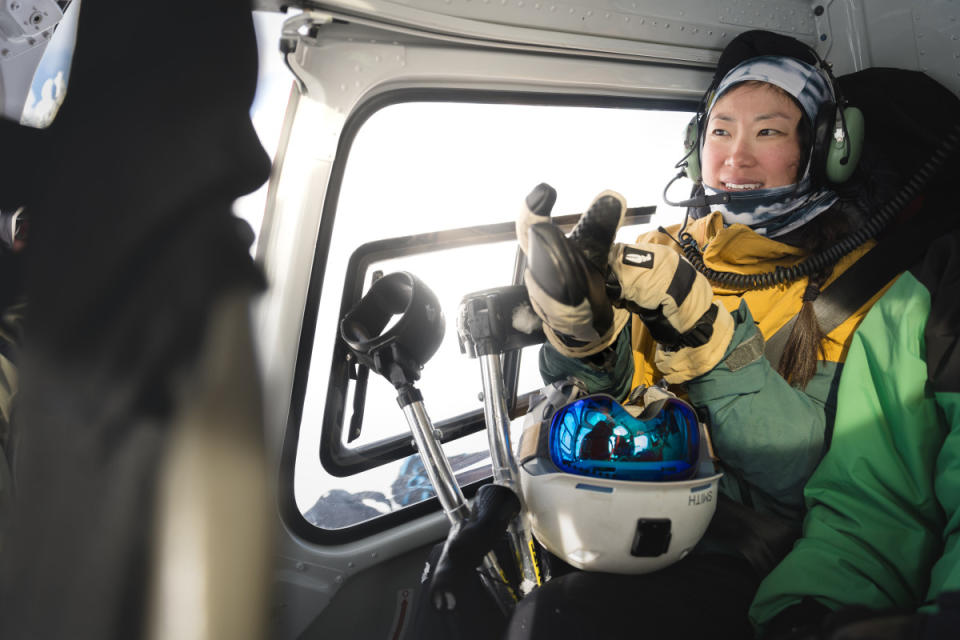
Photo: Robin O'Neill
She goes on to say that while some folks enjoy wearing an advocacy hat, that’s not necessarily what motivates her. “In general, I just want to go live my life. And if that helps other paras aspire to something, then that’s great!”
To that end, Anna says she often misses the anonymity she had before her accident: “Like being able to go to the grocery store without people looking at you and saying ‘You’re awesome!’ or ‘Do you need help?’ It’s like: ‘I’m just buying cereal.’”
Anna says this happens on the mountains, too. “Bachelor is great, I think because we have such an adaptive skiing presence that it seems like the general population is pretty used to seeing sit-skiers on the mountain. But there are other mountains where everybody’s staring, everybody’s hooting and hollering. And sure it’s fun for like a minute, but it gets old fast.”
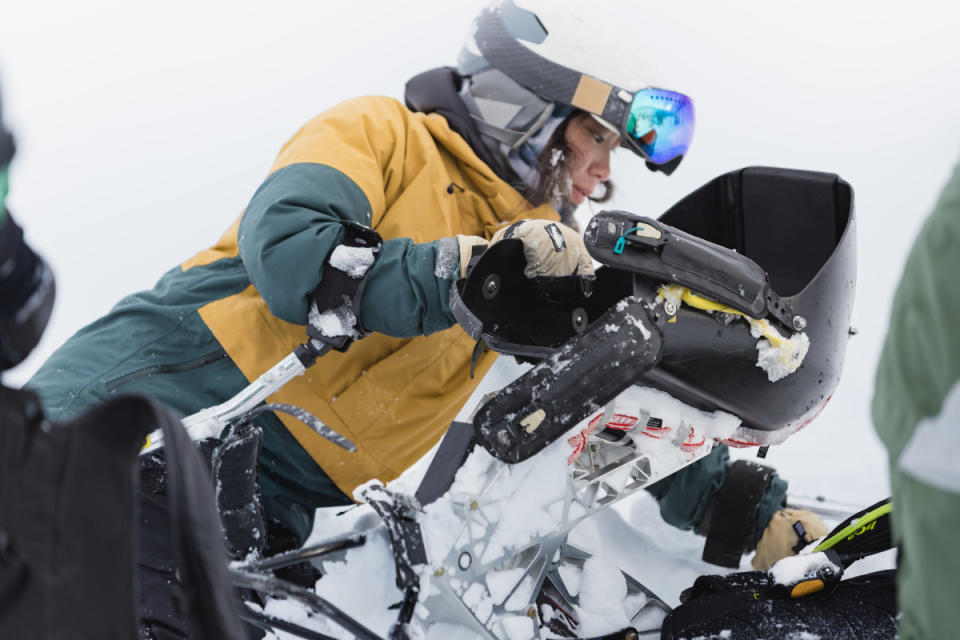
Photo: Robin O'Neill
Anna laughs at a particular memory: “I was at Mt. Baker with Ingrid Backtrom and it seemed as though they’d never seen a sit-skier there because everybody was shouting at me. And I was like ‘Do you know who I’m skiing with?!’ Like, I’m not the one you should be shouting at.”
“I don’t feel that I’m an expert in things,” Anna goes on. “I’ve lived my own personal experience which is totally different from the next para. Everybody’s injury and recovery and intro to the sport is different.”
Anna says that, similar to balking when asked to lead a DEI training at work simply because she is a woman of color, she cannot - and will not - speak for the entire adaptive community. “Do not rely on your token Asian para,” she says, rolling her eyes.
Like so many other athletes who get defined by others because of qualifiers - para, BIPOC, female, etc - Anna says that her desire to regain some anonymity might be better put as a desire to gain, perhaps for the first time ever regardless of injury or adaptation, the ability to self-define and set the terms of her sport and life for herself.
For now, Anna’s remedy and approach is to focus on the things that bring her joy and make her feel grounded. “This season has been kind of intentionally quieter than most. I’ve been excited about reconnecting with my local community helping teach and instruct, which has been fun.
“And my proudest moment was summiting Mt. Hood with my dad two years after my injury.” Anna says the experience was phenomenal even if it was challenging for them both.

“I walk with crutches and leg braces. So I basically had lightweight ski boots and modified crutches and ski poles and it was just like 10,000 tricep dips,” she shakes her head. “And then, it was the worst skiing of my life. Frozen, sun-cupped bullshit.”
“But the summit was great!” she laughs.
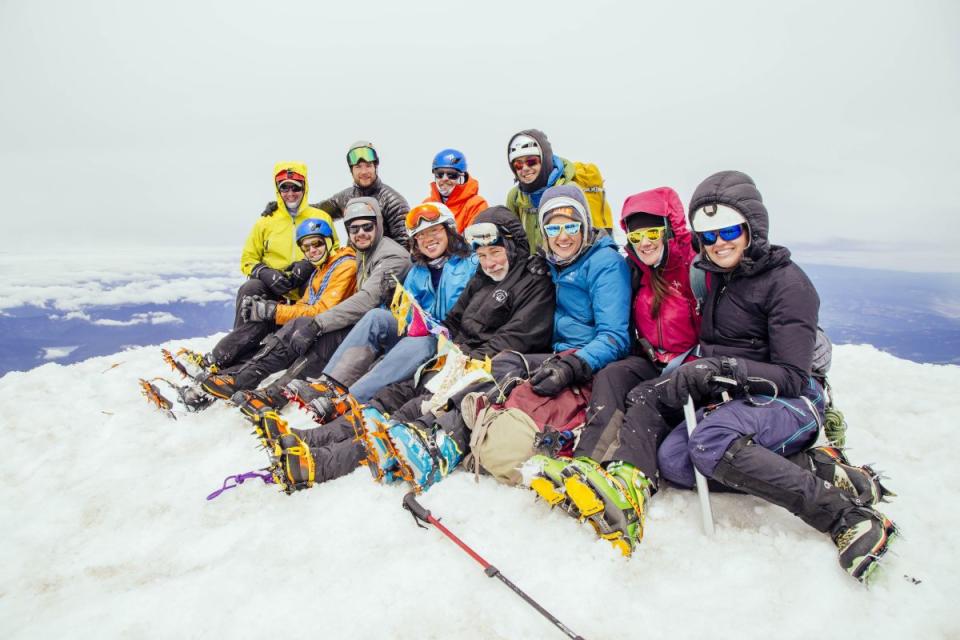
Photo: Lauren Danilek
Anna says her dad is most definitely not a skier: “He hiked down, and was so exhausted that they ended up towing him down on the sled that they towed my ski up in. He was 70 at the time and came from sea level.”
“I climbed Baker the next year and asked if he wanted to come and he said ‘Absolutely not.’” Anna laughs hard. “He was like, ‘Go on a kayaking trip and maybe then I’ll join.’”
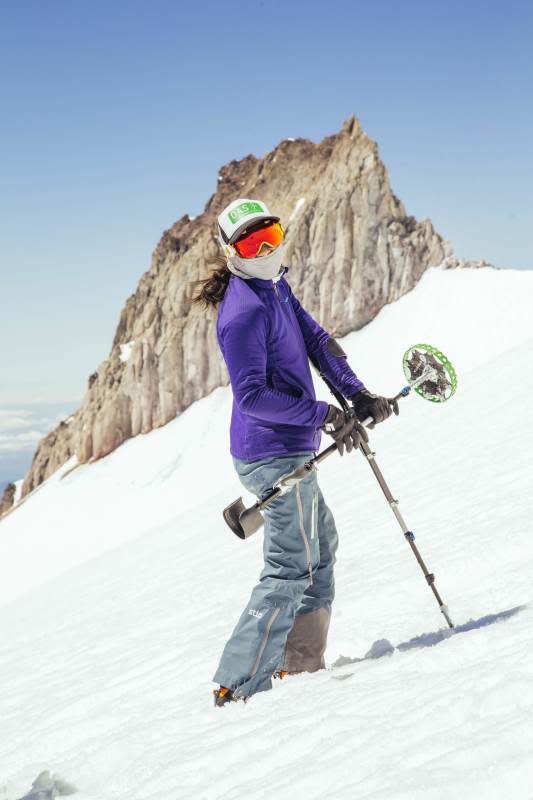
Photo: Lauren Danilek
To see if Anna ever does, in fact, take up kayaking, and to watch her “rip the same speed in the same terrain” as others in The Approach Film series, follow her on Instagram at @peaksandpuddles
